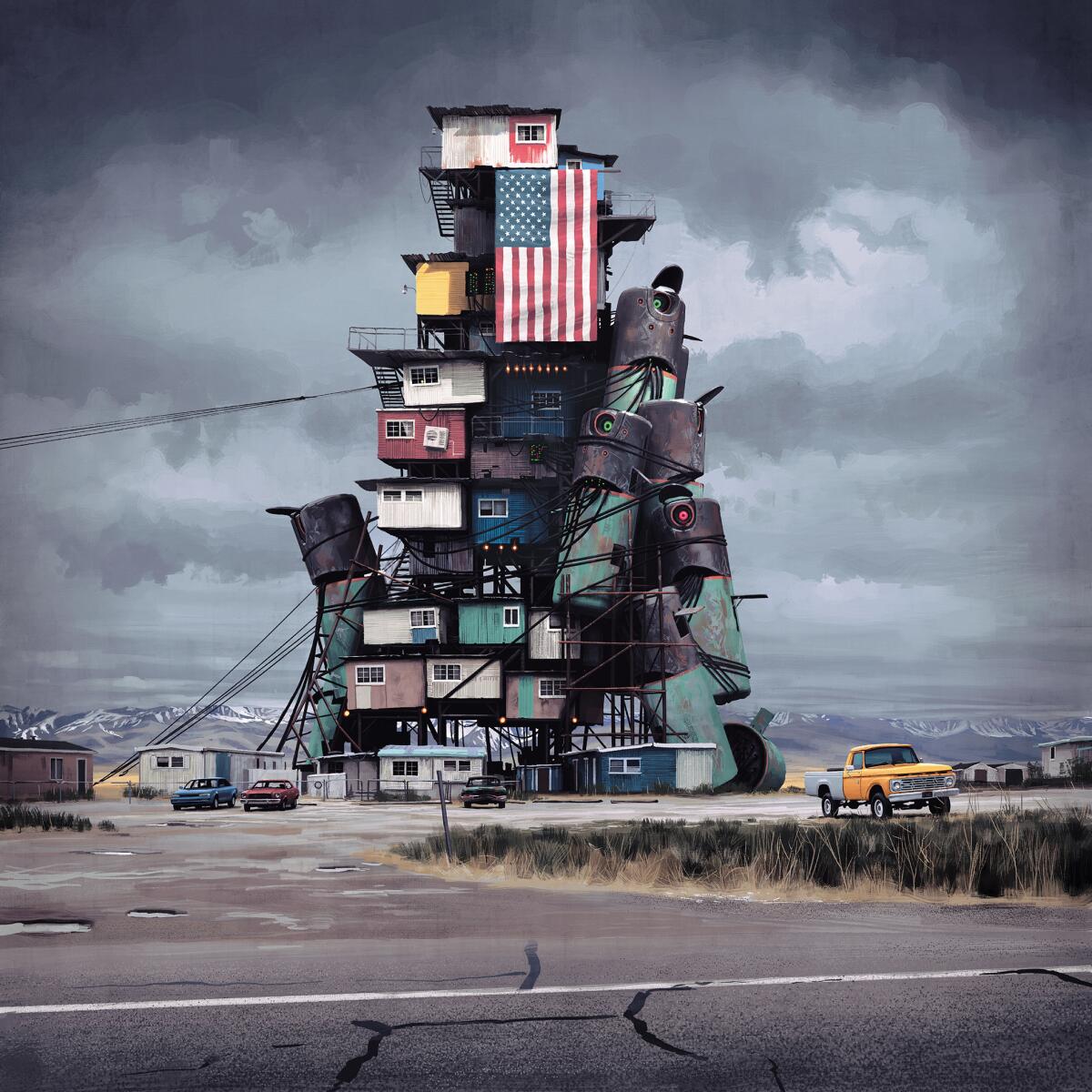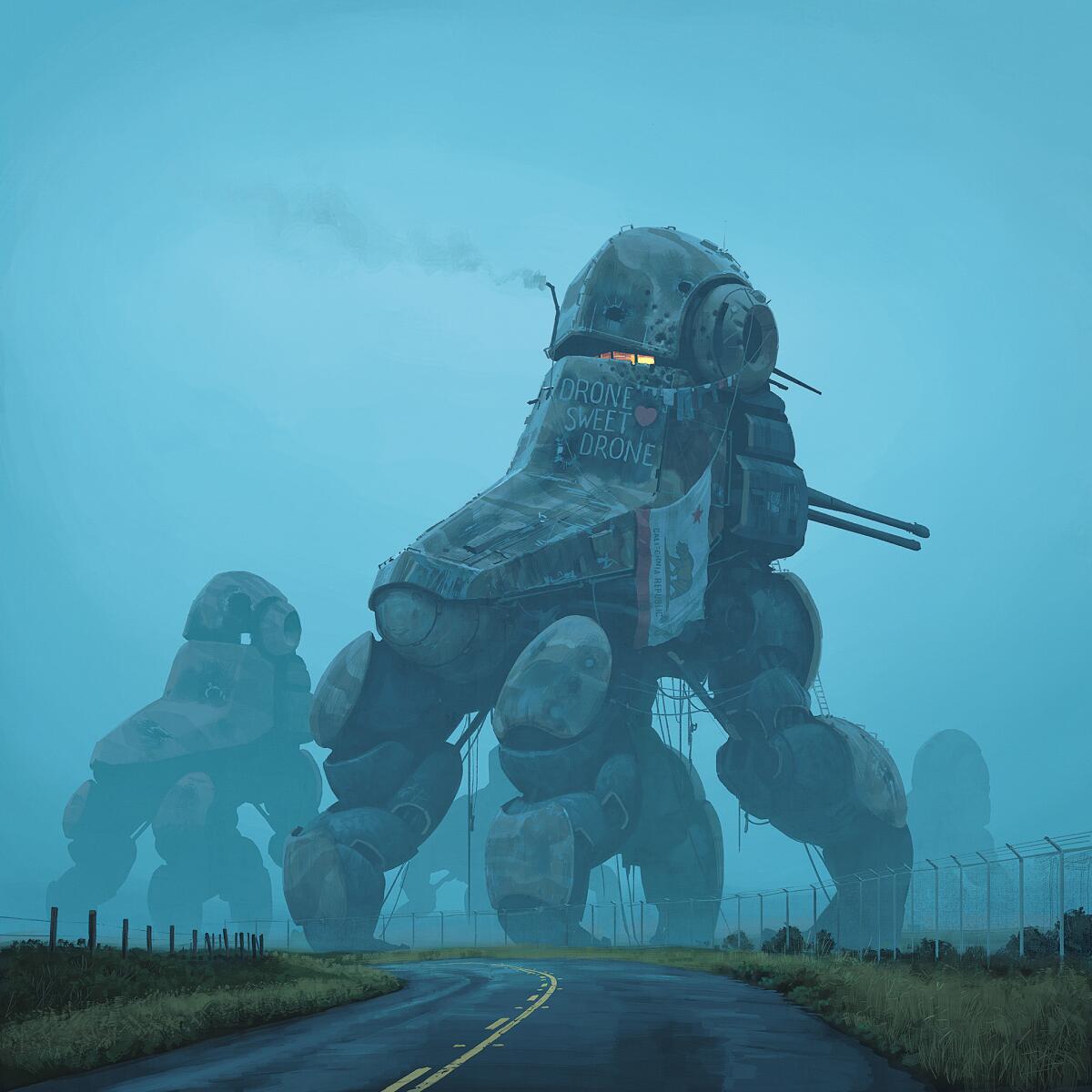Road trip through post-apocalyptic California with a robot and a runaway in Simon Stålenhag’s ‘The Electric State’

One of our most anticipated upcoming Netflix movies is The Electric State, directed by the Russo Brothers. Initially expected to release in 2024, the big-budget movie will now launch globally on Netflix on March 14, 2025. Here’s everything we know about the film starring Millie Bobby Brown and Chris Pratt, including first-look images, trailers, runtime, and exclusive details.
The Electric State has been years in the making before arriving on Netflix. Here’s a quick timeline of its development:
In the process of making “The Electric State,” Stålenhag used social media to ask readers about places that existed in the ’90s, like the chain drugstores and markets that pop up in the background. He shared some of the art as works in progress and says a lot of people commented that one design looked a lot like a Dalek, the villainous alien beings from “Doctor Who.” Stålenhag had never seen the famed British sci-fi series, but changed the design.
The full project can be quite immersive. Stålenhag is also an electronic musician whose ambient compositions are tied to his visual art and writing. For “The Electric State,” he made a corresponding soundtrack album. (His most recent album, “Music For DOS,” was made with now-vintage gear that he learned to use as an adolescent. It was released last summer.)
“The Electric State’s” protagonist, Michelle, is inspired by Stålenhag’s older brother and sister. His brother was a Nirvana fan, while his sister listened to the band REM. They passed the teen pop culture of the era down to Stålenhag. Michelle’s own protective, nurturing relationship with her younger brother is also inspired by the elder siblings. “My parents divorced when I was 10, so I guess the last four or five years of their marriage was pretty bad,” says Stålenhag, who was born in 1984. “My siblings, to some extent, took care of me and were kind of the adults for a while.” He adds that he wanted to make his book “about that kind of love that you have for your siblings,” while incorporating the pop culture elements of the 1990s.

(Simon Stålenhag)
That mix of science fiction and real world pop-culture nostalgia is instantly compelling, but there are layers to “The Electric State” that take the story beyond surface value. Michelle’s journey is told in the first person with frequent use of flashbacks to her life before she left home for Pacifica. The war is technically over, but the aftermath has been marred by its own strain of chaos. In a way, it is an extremely American story, bringing together themes like the intersection of war and technology; fire-and-brimstone religion and its effect on LGBT youth; families separated by great physical distance while still being a part of the same country.

And, yet, there’s a universality to the story.
Michelle may be young, but she has already suffered profound loss multiple times. She has been let down by life in ways that are extreme but relatable to many. “The emotional apocalypse has already happened to her, so when it actually starts happening around her, she’s already adapted,” Stålenhag says. “She’s a very good survivor.”
It’s a story that’s not bogged down with details; the minutia of 1990s California probably wouldn’t have worked anyhow. “I didn’t want to write about local, specific stuff because that would feel wrong,” says Stålenhag. “Those kinds of things, you can’t really research, you have to live them.”







